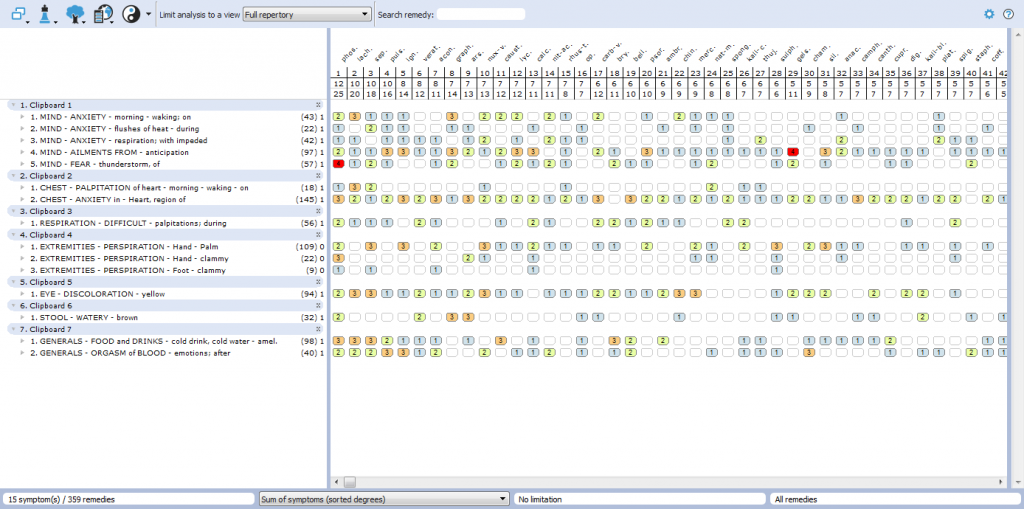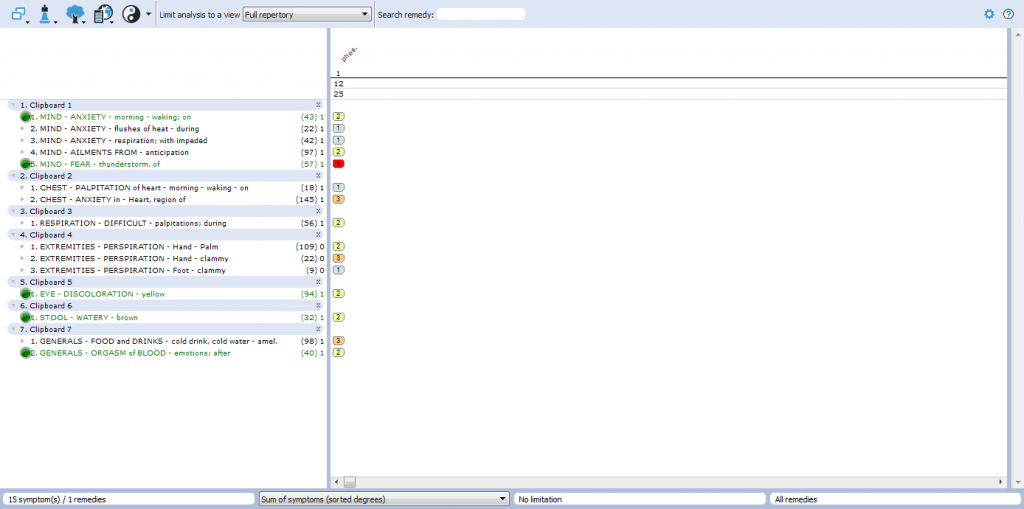Shelter from the Storm
Andrew Kaufmann, ND
Primum Non Nocere
A Homeopathic Case Report
Heather is a vivacious, hard-working 39-year-old mother of 3 boys, ages 7, 10, 21, and a 16-year-old daughter. She has been in several very stormy, unstable relationships over the past 24 years and she is now divorced and living with all 4 children. Heather was diagnosed with cervical cancer in 1995 and was successfully treated with conventional medicine. She has had several miscarriages and, in 2009, she was diagnosed with endometriosis, which resulted in a total hysterectomy. She reports experiencing 3 episodes of chicken pox since infancy. There is a strong family history of cancer: Her mother died from a malignant brain tumor, her maternal grandmother succumbed to bone cancer, and her sister was recently diagnosed with thyroid cancer. She quit smoking cigarettes in 2013 and does not drink alcohol or caffeinated beverages. She does not currently use recreational drugs; however, she was a frequent crystal meth user as a teenager. Overall, her diet is well balanced and she has no known food sensitivities. She is slightly overweight but exercises daily playing soccer or basketball as part of her work.
Symptoms
Heather has been battling severe anxiety and fatigue for 2 to 3 years. This came on suddenly with no apparent triggering event. Her sleep is restful and lasts 7–9 hours per night, but she rates her energy level as 5–6/10 on a 10/10 scale. Her chief concern is anxiety in the chest with heart palpitations and flushes of heat, especially in the morning upon waking. Anxiety is also experienced with anticipation of certain events or situations, however insignificant they may be. Panic attacks are very infrequent, occurring once or twice a year. Chronic loose, brown stools are also associated with the anxiety. Heather senses and is very fearful of approaching monsoon thunderstorms, remaining indoors until all is clear. She must close herself in the bedroom and turn up the TV or radio volume to drown out the noise of the storm. Large quantities of ice cold water are consumed throughout the day, including during every office visit.
Physical exam revealed a slight heart murmur that was previously undiagnosed. In addition, a very light, yellow tint to the sclera of both eyes almost went unnoticed. There was a prominent ebullition or ‘bubbling up” of blood to the face when Heather became excited or emotional in response to questions about her anxiety. She reported significant clammy perspiration of her feet and hands associated with the anxiety, but this is not very unusual. Self-medicating with various B-vitamin formulas and other nutritional supplements has been ineffective. She was recently prescribed alprazolam and sertraline by her primary care physician (PCP), which have provided some temporary relief from the anxiety.
Repetorization
There are several remedies to consider in this case. Although present on the repetorization chart (Figure 1), all three extremity rubrics are excluded (weighted zero), as they are not really unusual or particularly useful in this case but do provide further confirmation of the selected medicine. I will sometimes use strange, rare or peculiar symptoms by changing them from “normal” to an “eliminative” rubric to further assist with an analysis by narrowing the field (Figure 2). We all have our favorite materia medicas. I primarily exhaust the original provings from Allen, Hering and Hahnemann first, as they are usually the most reliable sources. A good homeopathic dictionary such as Yasgur’s is also quite useful for defining terms rarely used in the modern medical world.

Figure 1

Figure 2
Homeopathic Treatment and Follow-up
I prefer to be conservative when unsure of a patient’s sensitivity to medicines. Although I felt confident in choosing Phosphorous, I started her on 3 pellets of a 30C potency dissolved in one tablespoon of filtered water. Two days later, Heather stated, “I feel normal again! I don’t feel edgy and am at peace again.” After a second dose 2 days later, she reported feeling calm and relaxed, and her heart palpitations upon waking had gone away completely. Difficulty breathing was resolved with the anxiety. A third dose of 30C about 1 week after the initial dose produced a minor aggravation reported as slight numbness and tingling in the hands and legs, which quickly resolved after eating. A severe monsoon during that week did not trigger any anxiety, which she at this point rated as 40% better overall. She felt good enough to reduce the dose of alprazolam on her own from 1.0 mg to 0.5mg daily. She continued the nightly dose of 25 mg of sertraline. After another 2 weeks, she reported sleeping more soundly and found she was able to sleep a little longer without waking before her alarm. Bowel movements were daily and well formed.
About 1 month after her initial visit, she rated her energy level as 8–9/10, clamminess of the extremities was gone and she was taking a 30C dose of 3 pellets only as needed. All of this seemed great; however, occasional bouts of anxiety with palpitations were beginning to return. I decided not to increase the potency at this time but opted instead for a daily dose of 30C, 1 pellet, dissolved in one tablespoon of filtered water. One week later, Heather discontinued alprazolam completely and halved the dose of sertraline to 12.5 mg nightly.
There was no follow-up phone consult for the next 5 months, and then one day the phone rang. “I have been using Phosphorous in emergency situations only because I did not want to run out of the medicine. I have not needed alprazolam unless I do not take enough Phosphorous. But my PCP says I should stay on sertraline for a while longer. Whenever I take Phosphorous I feel normal like before I ever had any of these (original) symptoms.” She had recently used diphenhydramine to treat an upper respiratory tract infection with cough, fever and postnasal drip.
I decide it’s time to increase the potency and Heather decides it’s time to eliminate sertraline completely. I always prefer to have the prescribing physician involved when it comes to titrating down or discontinuing psychiatric medicines, but this is not always possible. Heather’s living situation had stabilized, producing a more peaceful environment. I prescribed Phosphorous 200C, 1 pellet weekly or as needed, at this point—approximately 6 months after the start of treatment. Heather reports, “things are going good because a lot of stress is off me.” A follow-up appointment with her PCP was scheduled to discontinue sertraline completely.
This is still a work in progress, but the future looks optimistic, with some careful case management.
Reflections
One of the industry standard tools I use for assessing depression in adults is the Pfizer Health Questionnaire (PHQ-9), since my practice is nearly 100% focused on seeing patients with mental, emotional and behavioral disorders. There is a similar tool available that is adapted for teenagers. Neither is the ultimate tool for a diagnosis; however, they can be useful in assessing the severity and duration of depression. In this case, the score was very low as Heather was not complaining of depression, only severe anxiety, but often they are interrelated.
At some point, an increase in frequency or higher dose of Phosphorous, or even a completely different remedy, may be needed if the symptoms indicate a change. For now, the waiting continues, which may be the most challenging part of homeopathic case management.
 Andrew J Kaufmann, ND, graduated from SCNM in 2003. He and his wife Sandra own a family-oriented practice specializing in the treatment of mental, emotional and behavioral disorders using classical homeopathy. Dr Kaufmann is a founding member of the Psychiatric Association of Naturopathic Physicians and Board Treasurer for the National Center for Homeopathy.
Andrew J Kaufmann, ND, graduated from SCNM in 2003. He and his wife Sandra own a family-oriented practice specializing in the treatment of mental, emotional and behavioral disorders using classical homeopathy. Dr Kaufmann is a founding member of the Psychiatric Association of Naturopathic Physicians and Board Treasurer for the National Center for Homeopathy.









